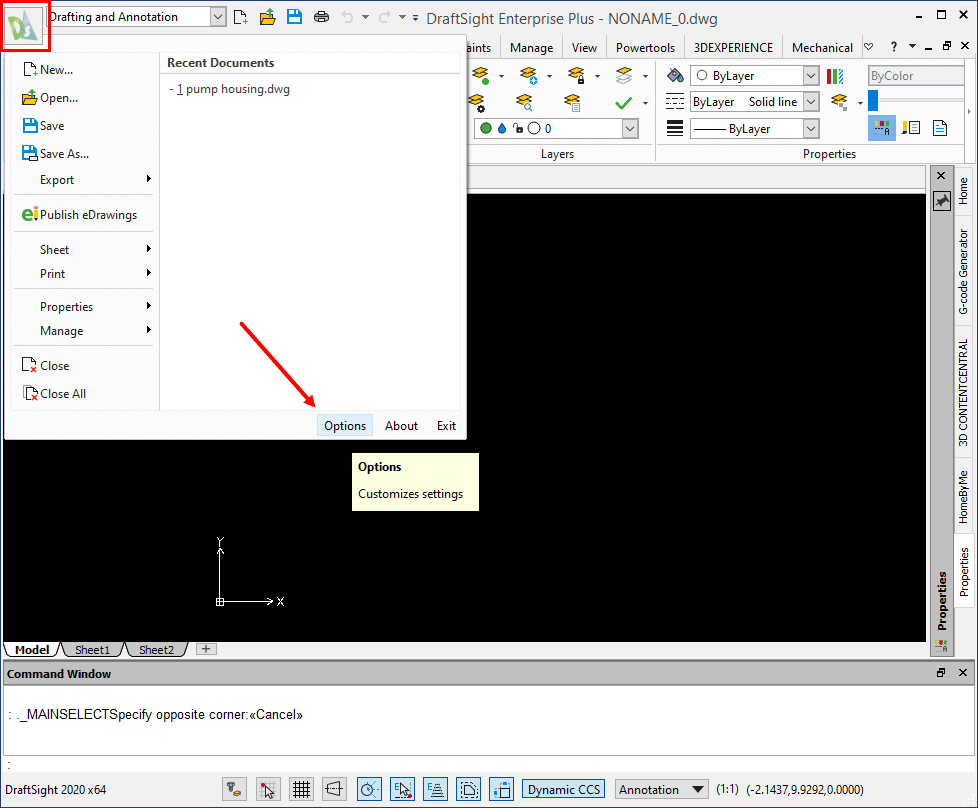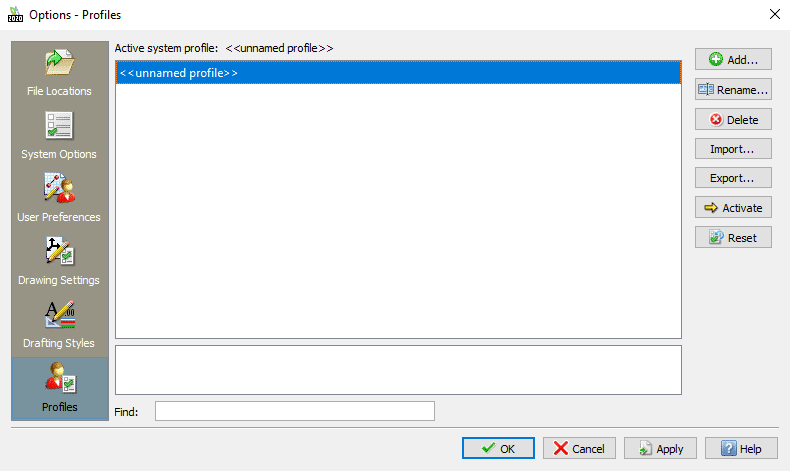Resetting (and saving) the DraftSight User Interface
Happy New Year! Even though it is the third week of January. With the new year comes more of the same, most of us are still working remote a majority of the time. Likely, you are like me and moving your laptop from one location to another and neither location has an identical hardware setup.
I was recently working with a customer in a similar situation, three monitors at home and two at the office. Upon moving the computer from one location to another, a user interface panel in DraftSight was accidently set to floating and then “lost” on one of the external screens. The missing panel was Properties, shown in the default orientation on the right side, which contains many useful tools and information about selected entities. You can see why the customer wanted the panel back.

Try as we might, we were not able to retrieve the missing panel though conventional means. All settings within DraftSight stated it was enabled. Yet in the image below, the Properties tab is missing within the red highlighted window. Disconnecting the external monitors or using the Windows key + P to cycle though the Multiple Display options would not bring the panel back to the user interface.

To get back up and running, we decided to reset DraftSight by closing the application and renaming the DraftSight user configuration folder located in:
C:Users[username]AppDataRoaming
To
C:Users[username]AppDataRoamingDraftSight_old
Upon starting DraftSight back up, the license agreement needs accepting and everything was back in default location and accessible. The customer was happy and able to get back to work.
I was not satisfied that the entire user folder needed resetting to solve this problem and after further testing, I found exactly what I was looking for. This panel, as well as other user interface elements and application settings, are defined in the profile.xml located in:
C:Users[username]AppDataRoamingDraftSight[DS version #]Profiles__unnamed profile__
Renaming the Profiles folder within the DraftSight version folder will also reset the User Interface upon starting DraftSight.
I want to emphasize to Rename any folders, and do not delete them.
You may care less about XML configuration files, nor do you want to browse Windows for folders to rename. To get back running quickly, we will create a backup of a working profile. Within DraftSight, select DS icon in the far upper left corner to show the File menu and choose Options. Of course, you can type “options” into the command line as well.

Within the Options, select Profiles at the bottom and start making changes.

The options are straight forward to Add a new Profile as well as Rename, Delete, etc.

Once you have created a backup profile, use “Export” to save the profile to an external file for further insurance. You can create as many profiles as needed for many purposes beyond backup. Set DraftSight up in a way that works best for you and save a Profile.
Technical Extra
I want to share some additional information I learned while helping the customer. The following information is intended as a learning exercise and should not to be followed. The recommended method is to create a new Profile as a backup and load that Profile when needed.
NOTE: it is not recommended, nor supported, to modify any of the XML configuration files for DraftSight. Incorrectly editing one of these files can have unintended consequences.
Within the profile.xml file is a section that controls the position of the various panels, below is the section for the Properties panel we were chasing down.

Because XML is plain text, it is easy to understand that the line with name=”floating” and a value=”true” controls whether the panel is attached to the DraftSight user interface. I can find the position by the name=”x” with a value=”3068” and name=”y” with a value=”205” lines. This tells me it is located outside the horizontal range of my 1920×1080 monitor. I was successful changing the value=“true” to “false” for the name=”floating” setting and the Properties panel was back inside the user interface upon starting DraftSight.
Hopefully, you have gained a bit of knowledge on where to go looking if anything is out of place in DraftSight and remember, create a back up Profile and save it for a rainy day (which is just about every day in the PNW right now). Of course, give us a call in Tech Support and we are happy to help.
Kris Dubuque
Managing Application Engineer
Computer Aided Technology

 Blog
Blog